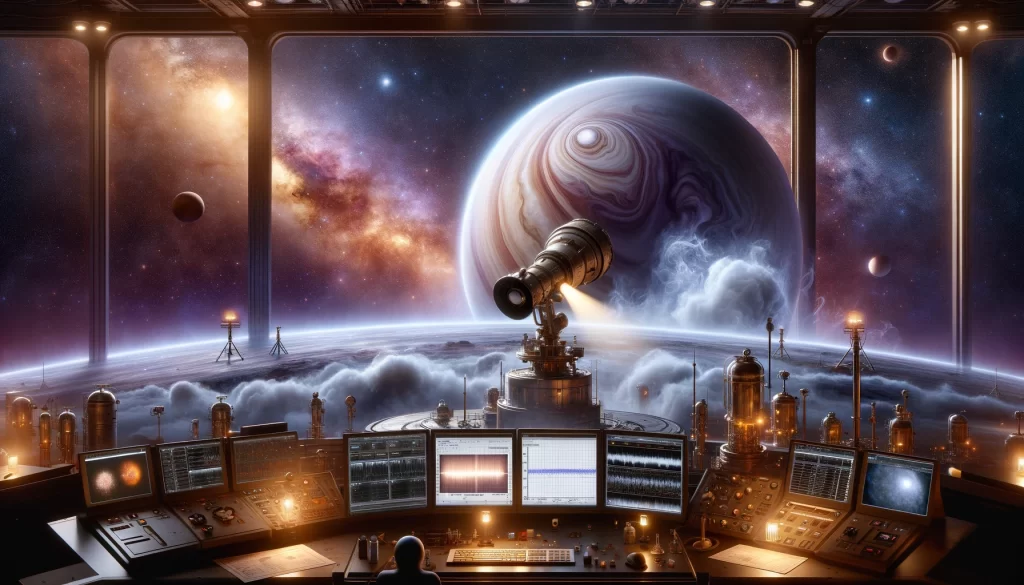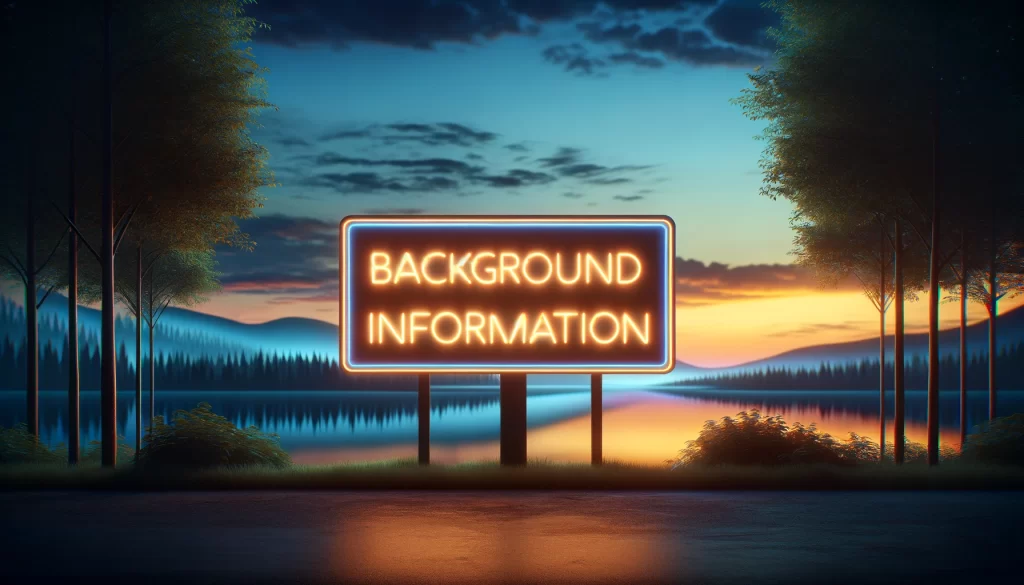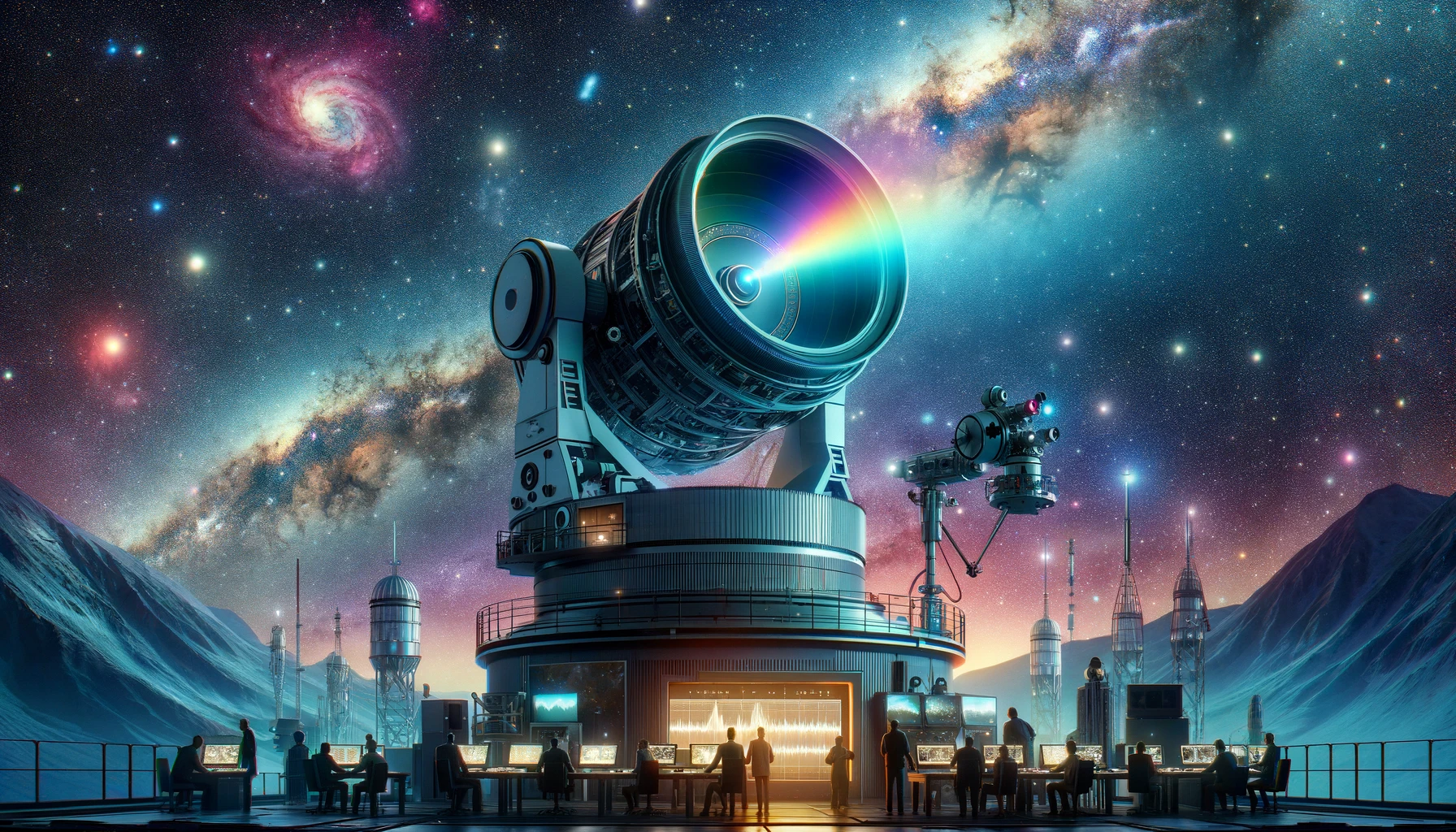In 2020, scientists found a gas called phosphine in the atmosphere of a planet that’s about the same size as Earth. Now, this wasn’t just any gas; phosphine is special because, as far as we knew, it could only be made by living things. This discovery led some to believe that there could be some form of life on this planet. The New York Times reported that scientists thought the presence of phosphine could only be explained by something that is currently alive.
However, the planet in question was Venus, our neighboring planet, and the idea that there might be signs of life there has been surrounded by a lot of debates and disagreements among scientists. They can’t even agree if phosphine is really there, let alone if it’s a sign of alien life.
This situation with Venus is a big deal because it shows how hard it is to figure out if there’s life on other planets, especially those that are many light-years away from us.
In 2021, NASA launched a very powerful telescope called the James Webb Space Telescope (JWST). It has already sent back information about the atmosphere of a distant planet, which some scientists think could possibly show signs of life. This has made people really excited about the possibility of finding alien life. But at the same time, it’s raising a lot of questions about whether we can really use this information to prove that there’s life on other planets.
There’s a big challenge in figuring out if gases in a planet’s atmosphere are truly signs of life. This challenge is known as the “problem of unconceived alternatives.” Basically, it means that there could be ways gases are made that don’t involve life, but we just haven’t thought of them yet. This makes it really tough to say for sure if finding a certain gas means there’s life on another planet.
Daniel Angerhausen, an astronomer working on a project to find life on planets like Earth, mentioned that this issue is like an “elephant in the room.” It’s a big problem that’s hard to ignore.
Scientists use something called Bayes’ theorem to help them figure out the chances of life existing on another planet. They look at three main things: how likely it is for life to start on that planet, if there’s life, how likely it is to create the gas we’ve found, and the chances of the planet making that gas without any life. But even with this method, there are a lot of uncertainties.

For example, a planet named K2-18 b showed signs of a gas called dimethyl sulfide, which on Earth is made by life in the ocean. Some scientists thought this could mean there’s life in the oceans of K2-18 b. But others believe the planet might not even have a surface ocean and that it’s more like a giant gas planet, which would mean no life as we know it.
This isn’t the first time scientists have had to rethink what they believed were signs of life. When they found phosphine on Venus, they initially thought it could only come from life. But later, they found out there could be non-living ways to make phosphine, like from volcanoes.
Now, scientists are moving away from the idea that one single gas could prove there’s life on another planet. Instead, they’re looking for combinations of gases that would only make sense if there was life constantly producing them.
Despite these challenges, there are scientists like Sarah Rugheimer, who are still hopeful. She’s studying different gases that might be found together if there’s life on another planet. She said she would be very excited to find a mix of gases like oxygen, methane, water, and CO2 on another planet because it could be a strong sign of life.
But there’s a big difference between being excited about a discovery and officially announcing that we’ve found alien life. Scientists are trying to figure out the best way to talk about these discoveries without confusing the public or making people lose trust in science.
NASA and other scientists are working on setting clearer standards for what counts as a sign of life. This is important because as we learn more, we might have to change our minds about what we thought we knew. That’s just how science works. It’s all about exploring, making mistakes, and learning from them.
Clara Sousa-Silva, who was part of the team that found phosphine on Venus, thinks we should keep studying Venus to learn more about it and to better understand the gases we find there. This could help us learn not just about Venus but about other planets too. She sees this as a hopeful sign for the future of exploring other worlds.
This article is based on the following article:
https://www.quantamagazine.org/doubts-grow-about-the-biosignature-approach-to-alien-hunting-20240319/#:~:text=Today%2C%20astrobiologists%20have%20largely%20abandoned,combination%20of%20oxygen%20and%20methane

Background Information
Understanding these concepts provides a foundation for grasping the challenges and advancements in the search for extraterrestrial life. This quest not only pushes the boundaries of our scientific knowledge but also challenges us to rethink our place in the universe.
1. What is Phosphine?
Phosphine (PH₃) is a toxic, flammable gas that, on Earth, is primarily produced by organic (life-driven) processes. It’s found in places where anaerobic organisms (those that live without oxygen) thrive, such as swamps or in the guts of animals. Its detection on Venus sparked interest because it could suggest the presence of life, given our understanding of how phosphine is produced on Earth.
2. Venus and Its Atmosphere
Venus is often called Earth’s twin because of its similar size and mass. However, its surface conditions are drastically different. Venus has a thick, toxic atmosphere primarily composed of carbon dioxide, with clouds of sulfuric acid, making it inhospitable to life as we know it. The surface temperature is hot enough to melt lead. These harsh conditions make the discovery of phosphine even more surprising.
3. Exoplanets
Exoplanets are planets that orbit stars outside our solar system. Thousands have been discovered in the past two decades, ranging in size from larger than Jupiter to smaller than Earth. Some exoplanets are located in their star’s “habitable zone,” where conditions might be right for liquid water to exist on the surface, a key ingredient for life as we understand it.
4. James Webb Space Telescope (JWST)
Launched in 2021, the JWST is the most powerful space telescope ever built. It can observe the universe in infrared light, which allows it to look through dust clouds and see light from the earliest stars and galaxies. It can also analyze the atmospheres of exoplanets, searching for gases that might indicate the presence of life.
5. Biosignatures
Biosignatures are signs that could indicate the presence of life. These can be specific gases in a planet’s atmosphere that, based on our understanding of chemistry and biology, could not exist without being produced by living organisms. The search for biosignatures is crucial in the hunt for extraterrestrial life.
6. Astrobiology
Astrobiology is the study of the origin, evolution, distribution, and future of life in the universe. It combines aspects of astronomy, biology, chemistry, and earth science to study the possibility of life on other planets.
7. The Problem of Unconceived Alternatives
This problem highlights the challenge in being certain that a detected gas is a biosignature. Since our knowledge of exoplanetary geology and chemistry is limited, there might be non-biological (abiotic) processes that can produce these gases, which we haven’t discovered or considered yet.
8. Bayes’ Theorem
Bayes’ Theorem is a mathematical formula used to update the probabilities of hypotheses based on new evidence. In the context of exoplanet life detection, it helps scientists estimate how likely it is that life exists on another planet based on the detection of potential biosignature gases and other known conditions of the planet.

Debate/Essay Questions
- Is the Search for Extraterrestrial Life Worth the Investment?
Please subscribe to Insight Fortnight, our biweekly newsletter!
